
How to Buy a Shipping Container (2025 Guide)
Before You Get Started
When your search for a shipping container begins, you’ll quickly find that these simple steel boxes go by a lot of different names. Some common alternative names for shipping containers include:
- - Storage containers
- - Conex containers (or conex boxes)
- - Cargo containers
- - Sea cans (or c cans)
- - Freight containers
- - Ocean containers
- - Intermodal containers
Rest assured, these terms refer to the same thing: A standardized box manufactured from COR-TEN (weathering) steel, and used for international shipping.
(Interested in the history behind some of these names? Check out our terminology guide for more).
Choosing the Right Shipping Container
Sizes
One of the best things about working with shipping containers is their standardized size and capacity. Just like giant Lego blocks, shipping containers' universal design and modular character yield endless possibilities for creation, from tiny homes to health clinics to urban gardens. Connect them, stack them, kit them out with amenities—there’s no limit to what you can create.
The most common shipping containers available for sale are 20ft and 40ft long. A standard 20ft container provides 160 sq/ft of space (or slightly less, if you plan to insulate or add drywall). If you're storing large equipment or planning a not-so-tiny home build, a 40ft container offers 320 sq/ft of space. Each is available in two heights: standard height (8'6") and high-cube height (9'6"). Other, less common options include 10ft, 45ft, and 53ft—though their scarcity comes with a heftier price tag.
For a detailed breakdown of shipping container sizes & dimensions—including a handy comparison chart—check out our shipping container measurements guide.
Conditions
Once you’ve chosen the right container size for your project, it’s time to decide if you want to purchase a new container or upcycle a used one.
New (One-Trip) Shipping Containers
New containers, also known as one-trip containers, have only been used once to ship a single load of dry cargo on their journey to the U.S. These containers are durable, built to last 25-30 years, and don’t require any upfront maintenance or painting.
While they may have light scratches and dents on their interior and exterior, one-trip containers are the newest and nicest containers available on the market. Additionally, if you purchase your one-trip container from Boxhub, you’ll be covered by a 5-year condition guarantee.
Used Shipping Containers
Used containers have been used for international shipping for anywhere up to 20 years—sometimes longer. Any used container will show signs of wear from rough ocean travel, so plan for dings, dents, and surface rust.
It’s generally accepted that there are four grades of used containers:
- - As-is: A well-used container that may no longer be weatherproof.
- - Wind & watertight: A well-used, weatherproof container that’s no longer stackable.
- - Cargo-worthy: A well-used, weatherproof container that can be stacked and used for shipping.*
- - IICL/Multi-trip: A gently-used container that can be stacked and used for shipping.*
For a more detailed breakdown of shipping container conditions (with photos), check out our shipping container conditions guide.
*If you plan on using your container for international shipping, it must undergo a CSC inspection prior to use.
Standard vs. Specialty Containers
A standard shipping container has one set of ISO cargo doors on one side and can adapt to most uses (storage, shipping, moving house, etc.) pretty well. However, some projects or cargo require a more specialized container.
Specialty containers are less common variants of standard containers, designed for unique use-cases, such as transporting oversized goods. Some examples include:

These have a removable roof, perfect for loading and unloading bulky items like machinery.
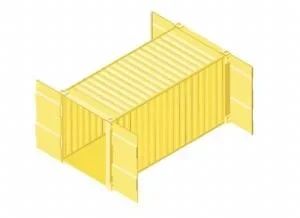
Featuring doors at both ends, these containers make loading and unloading quicker and more efficient.
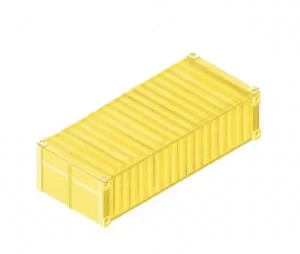
These are shorter than standard ISO containers, designed for transporting heavy, dense cargo like coal, rocks, or minerals
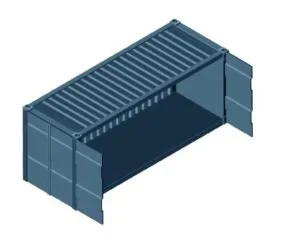
These have big, sliding doors on one side that give full access to heavy, bulky goods.
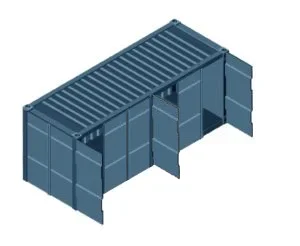
These have multiple doors on the side, making it easier to load and unload cargo rapidly
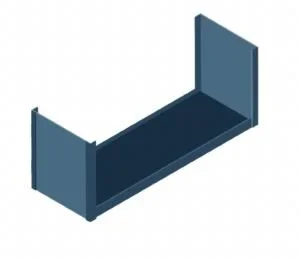
For a full breakdown of the specialty containers available for sale, consult our specialty unit buying guide. If you plan on storing temperature-sensitive goods, skip to our reefer buying guide.
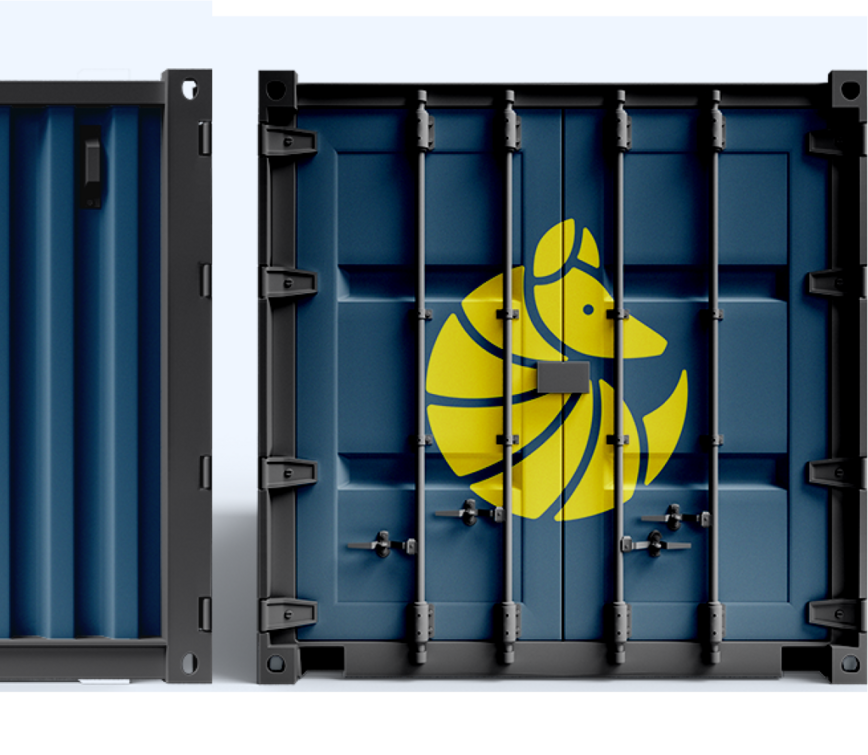
Finding a Shipping Container Supplier
You’ve got your container size, type, and condition locked in. Now it’s time to figure out where to purchase your box from. Finding a reliable supplier is the difference between feeling on top of the world—or feeling like someone dumped 8,000 lbs of scrap metal on your property. The lesson: Not all suppliers are created equal. Taking the time to research their reputation can save you from potential headaches down the road.
Conduct an Online Search
A simple online search can help you find container suppliers in your area. Use simple search queries like “buy a shipping container near me” or “shipping container sales” to narrow your search. Look for companies with professional websites, transparent pricing, and clear customer policies.
Always check for:
- - Money-Back Warranty – Protects you in the event a supplier doesn’t deliver what they promised. Boxhub offers a 30-day money-back guarantee.
- - Condition Guarantee – Ensures the company you’re interested in purchasing from stands by their product on a long-term basis. Boxhub offers a 1-5 year condition guarantee.
- - Customer Reviews – Promotes real customer stories via trusted third-party review sites such as Google, Trustpilot, and Yelp.
- - Industry Accreditations – Reduces the risk of scams and ensures you work with a legitimate business. Boxhub is a proud member of the NPSA and CSTA.
- - Better Business Bureau Accreditation – Unresolved consumer complaints submitted to BBB are a red flag. Boxhub is BBB accredited and A-graded.
- - Unfiltered Customer Experiences on Online Forums – Reddit and industry forums provide real buyer stories that are unmoderated and unbiased.
For more tips on how to avoid online container scams, consult this guide.
Paying for a Shipping Container
By this stage, you’ve done the legwork—researched suppliers, checked customer reviews, and verified their credentials. Now, you can feel confident in making your purchase. Like any other online purchase, buying a shipping container typically requires payment upfront.
Yes, receiving an 8,000-pound steel box is slightly more involved than receiving your regular Amazon Prime package—but the premise is the same: your container supplier will process payment before arranging a smooth, hassle-free delivery.
There are various payment methods available to you that offer both security and flexibility. The most common options include:
- - Credit Card – Provides fraud protection and chargeback options, giving you peace of mind in case of any issues.
- - ACH Transfer – Preferred by many customers due to lower transaction fees, but offers fewer buyer protections than a credit card.
- - Third-Party Financing – Offers payment plans, allowing you to break the cost into smaller installments (typically subject to a credit check). Boxhub offers financing options via Klarna.
Choosing the Right Delivery Method
You’ve got the receipt for your container purchase in-hand (or in your inbox). Now how does your new steel box actually get to your property?
Container companies like Boxhub offer three methods of receiving your container: Pick-up, flat-bed, and tilt-bed. The best method depends on your site’s accessibility and available equipment.
- - Tilt-Bed – Easiest option; the container slides off the truck into place.
- - Flat-Bed – Requires a forklift or crane for unloading.
- - Pick-Up – Cost-effective if you have transportation and unloading equipment.
When you place your container order with Boxhub, you’ll be provided with an online delivery questionnaire to fill out. There, you can tell us about how you’d like the container loaded and any space constraints on your site. You can even provide photos of the delivery site, so your delivery driver knows exactly where to place it.
For a more detailed breakdown of delivery options—and the site preparation required—consult our delivery guide or watch the explainer video below.

